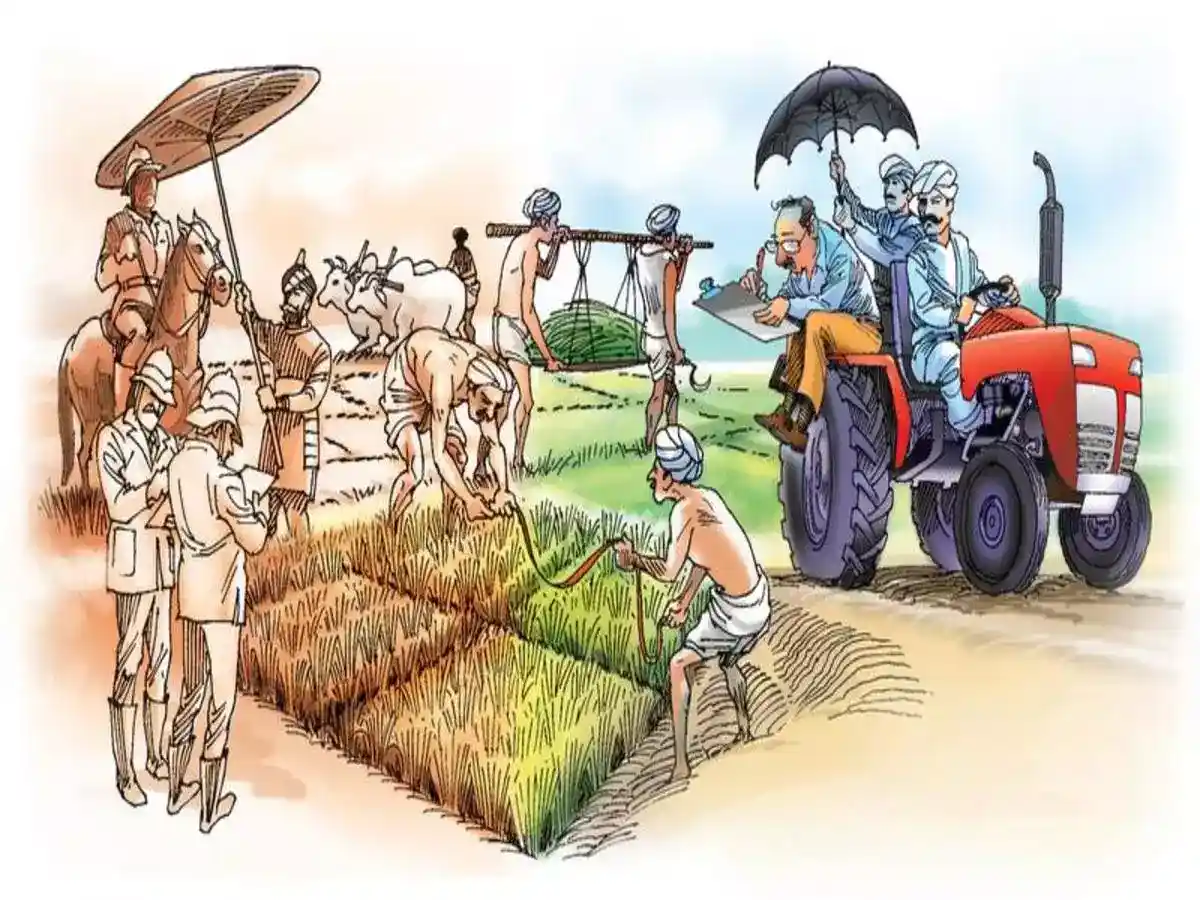When the British tried mapping the Indian farmlands
The British had revenue settlements in place that could minimise their administrative costs. However, the British in their Mahalwari system took over a job, very opposite to their behaviour that would increase their costs by folds. Were the British up to their job?

The method of mapping of farmlands under the British regime and in today’s date remains the same; Image source: Times of India.
In the last parts, we saw stark differences in the two settlements that were the permanent settlement and the Ryotwari settlement. Now, we look at the third and the final revenue settlement that was the Mahalwari settlement. We will see how this settlement was a mixture of two in some ways with the introduction of something very new.
Just like the Ryotwari settlement, the land ownership of the land remained with the peasants. The lands were hereditary and transferable in nature. At the same time, like the permanent settlement, intermediaries for revenue collection were present. These intermediaries were the village headman called ‘Lambardars.’ In case the farmer failed to pay the revenue, it could lead to snatching away of his land.
For the collection of revenue, the villages were grouped together as a single economic unit. These units were called ‘Mahal’ from which the name Mahalwari system emerged. It was prevalent in 30% of the British India farmlands that was initially introduced in western Uttar Pradesh and later extended to the rest of North India.
A new initiative was taken under this settlement and that was- mapping and registration of the land of India. Never ever, the land records were maintained before the British. It was a highly tedious and treacherous job that no king wished to take upon.
It seems that the British didn't realize just how time-consuming and costly this work was as they failed miserably. While the British did say this, they didn't allow the required employees or the funds to this initiative.
Imagine what would happen if a single person was told to map and register lands for many Mahals in a stipulated time frame. He would go to the lands, observe them from a distance and write a completely baseless estimate that he thinks is correct without consulting anyone or measurement of land. This is what happened in the case of British implementation. With the unavailability of required officials, all the records were based on idiosyncratic estimates.
Sadly, enough such idiosyncratic estimates and lax behaviour of bureaucracy aren’t completely eradicated. Instead of using better satellite methods for the measurement of land, the method of baseless estimates still persists in India.
Also, the revenue rates were quite high which led to widespread discontent among the farmers. In order to pay the revenues, they began taking loans at staggering rates from money lenders. The principal sum and the interest amount kept on piling eventually, pushing the farmers into a debt trap.
The farmers to get out of the trap began selling their lands. This settlement saw the frequent buying and selling of land. This phenomenon is referred to as ‘commodification of land.’ It means that land, a natural stationary resource became a commodity similar to clothes and food, something very easily brought and sold in the market.
The farmers under the Mahalwari system were greatly dissatisfied and their anger was expressed loudly in the Revolt of 1857.


